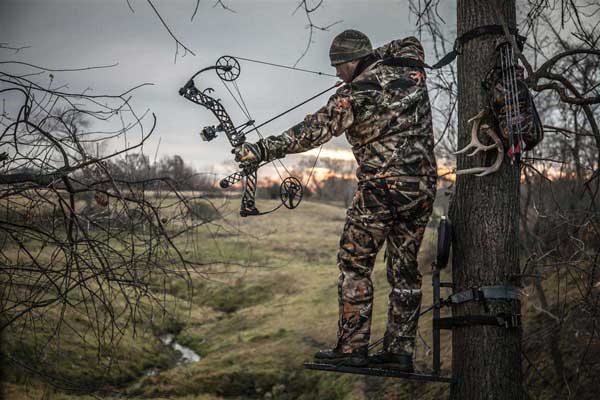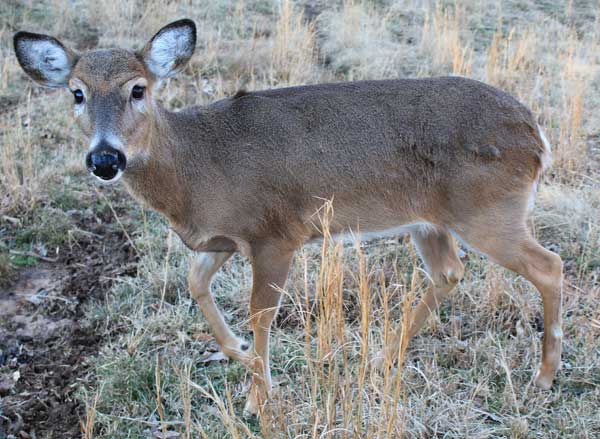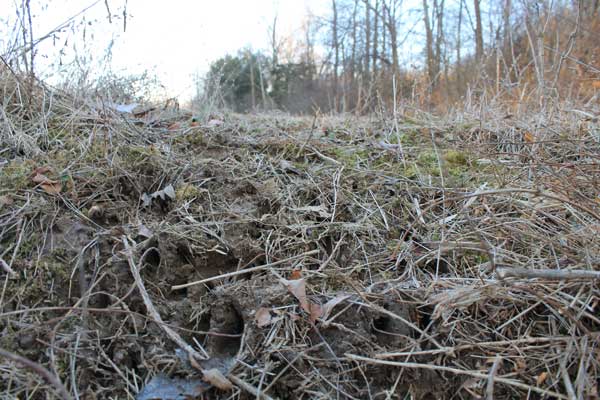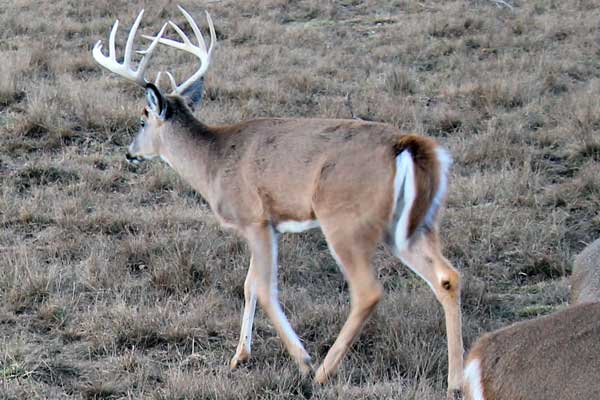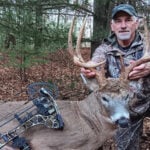LAST UPDATED: May 1st, 2015
It’s called stand burnout. It’s a nasty thing. And it can happen to you if you aren’t careful, even meticulous, when it comes to hunting your stand locations.
Understanding the Illness
Stand burnout happens when a given stand receives too much pressure. For example, if a hunter goes in and hunts the same stand day after day, for the entire season, it becomes susceptible to stand burnout. This happens more often than we might think.
It doesn’t matter how good the spot is or how many deer you see in there. By the end of the season, it’s not going to be the honey hole it started out being. The more you hunt a spot, the more hunting pressure it receives. Even if you don’t get busted, you’re still leaving behind scent. Scent that can be detected for days after it’s been laid down.
Stand locations are often the best the first time on stand. After that, the quality generally degrades. Hunter seen wearing Lost Camo.
I’m predominately a bowhunter. I prefer a stick and string. But I’ve always said that a bad bowhunter is a good gun hunter’s best friend. Bow seasons typically open sooner. So, by the time gun season rolls around, bowhunters have tromped the woods and pushed deer into the pockets where they haven’t received pressure. This is often the blocks of timber under the control of those who wield the thunder sticks.
Don’t get me wrong. I am all for going into a spot and hunting it for several days straight if the conditions are right. Focusing on one spot until the buck slipped up has been the method behind killing some of my biggest bucks. But the conditions have to be just right. The wind must be perfect. Scent control must be up to par. Entry and exit routes must be planned. Everything must be in line.
Diagnosing the Symptoms
So how do you know if you’re hunting a particular stand too much? Look to the deer. Are you seeing less deer? Are deer moving mostly at night? Are deer using trails that lead out of bow range? The questions go on. If the deer are doing things they weren’t doing when you first invaded the area, your stand has likely fell ill to stand burnout.
If you have deer looking at your stand when they come in, you know without a doubt, it’s time to make a change. Photo by Josh Honeycutt
Don’t confuse and misdiagnose stand burnout with changing patterns though. Deer regularly change patterns based on changing food sources and bedding cover. Use sound judgment when trying to determine whether or not you have overhunted a stand, or it’s just the deer doing what deer do. Have someone from the outside take a look at your situation. Tell them your experiences and let them know of any changes in deer activity and behavior. It will be apparent to someone on the outside in times when you don’t want to see the truth of the matter.
Addressing the Issue
It can be tough to own up and admit a stand has been overhunted. No one likes to admit it. I sure don’t. It’s not fun to kill a smoking-hot spot before the hunting peaks. It happens though and is something we must address. Like any other problem you have to admit it’s a problem and address the issue before it can ever be fixed.
Why it Matters
Some folks might say that it doesn’t matter. I’m still seeing deer. I’ll fill my tag anyway. Well, that very well may be true. But the more pressure you administer to your hunting spot the less likely success becomes.
Deer using trails that lead out of bow range, instead of the ones that hug your stand location, is a sign that stand burnout might be in play. Photo by Josh Honeycutt
Deer are very fickle creatures. They are very wary creatures. They don’t tolerate much human invasion into their territory before altering behavioral instincts and patterns. Matter of fact, mature bucks change dramatically with their first human encounter. I’ve seen it several times in my own hunting career. I’ve bumped several bucks that either started moving solely at night because of my screw-up, or abandon the area altogether. It doesn’t take much to send your target buck over the hill and onto the neighbor’s ground.
The Road to Recovery
Even with all of the negativity and doomsday talk, there is a silver lining. There is a shining light at the end of this dreadful tunnel. Tags can still be filled and hunting spots can still be salvaged. But listen up.
Hang more stands right now. You can still pursue the same deer, on the same ground, in the same fashion you already do. You just need more elevated perches to chase them from. You can buy decent lock-on treestands for 30 or 40 dollars through some retail outlet stores. Get 3 or 4 of them and put them in strategically placed locations where you can get close to deer.
This keeps the deer guessing. It keeps them on their toes. Hunt each stand according to the wind. Having numerous stands in a given location can really up the odds on big deer. Having only one will significantly reduce them.
Find the best stand locations and key in on pinch-points and funnels to take advantage of rut activity. Then focus on travel routes between bedding areas to food sources, and sometimes right on food sources, for afternoon hunts. Deer hunting isn’t hard. Getting up when it’s cold enough to freeze the chin hair off a grasshopper is the hardest part. Trying to refrain from hunting the best stand every time to the field can be tough too. But be vigilant in your self-control and only hunt the best stand locations when the timing is absolutely right.
.Hanging stands and moving around during the hunting season can be tough work. However it can also pay off big time with an opportunity at a deer you may have pushed out of your original stand locations. Photo by Josh Honeycutt
Conclusion
Overhunting stands can be a serious problem for a bowhunter. It can turn a great spot into an average one. It can bump deer, push deer and pressure deer like no other. That’s why it can’t happen. It must never happen. That is, if you still plan on tagging a big whitetail this year. And we all want to tag a big whitetail.

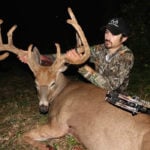 By
By 